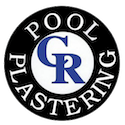Gemstone™ Care & Info Guide
Swimming pool plaster is composed of white cement and crushed marble. Being a cement product, it goes through a curing stage that takes about fourteen days. During this period, proper care and chemical maintenance is essential. We recommend you take a quart of water from the pool to a reputable pool service/supply store to be chemically analyzed. The following maintenance procedure should be followed:
- FILLING THE POOL – We will begin filling your pool when plastering is completed. Do not turn off the water until it reaches the tile. You should add as many hoses as practical (borrow from your neighbor?). Tie a towel around the end and put it into the deep end of your pool. Filling the pool quickly retards the curing process and minimizes shrinkage checks and crazing.
- BRUSHING THE POOL – As soon as your pool is full, you should begin brushing. Use a nylon bristle pool brush for plaster or a 50/50 (half nylon and half steel) for aggregate pools. Be sure to brush the whole pool-walls, floor, steps, seats, etc. You can’t brush too much (a minimum of three times a day). You will notice a cloudy, dusty material as you brush this is normal. Brushing and strict chemical balance will keep the majority of this dust from turning hard on the plaster. Do not run the pool sweep until all sediment is gone.
- FILTRATION – As soon as possible after the pool is full; the filter should be turned on and run 24 hrs/day. System should be run with full bottom suction. Do not turn the filter off until the water is clear. Check the filter pressure daily. If you notice a pressure rise of five pounds or more, shut off the system, clean the filter, and restart.
- CHEMICALS – Improper chemical startup and water balancing will damage the new finish and void the warranties. We highly recommend using a certified professional technician. Please follow the NPC (National Pool Plaster Council) ” Swimming Pool Start-Up Procedures“.
- INFORMATION – Ph Maintenance, filtration, brushing and water balancing are all essential to maintaining a smooth clean finish that will last for years. Plaster is, however, made from refined materials applied under conditions beyond our control and is seldom blemish free. No two pools ever look the same. Air temperature, wind, moisture, and exposure to direct sunlight affect all phases of construction and therefore, the finished ‘look’ of your pool.
IMPORTANT INFORMATION
You may notice anyone of the following conditions. These are not considered a deficiency in materials or workmanship:
Surface checking and crazing – Cement shrinks as it cures. These do not leak, and are usually to ‘tight’ to require patching. More noticeable in colored plaster.
Discoloration:
- Brownish-Usually organic from dust/dirt
- Grayish-Usually calcium deposits. ALL POOLS have some calcium deposits. Keep to a minimum by adhering to 2, 3, and 4 above.
- Dark spots or blotches on colored plaster-This is the original color of the plaster-Plaster without any calcium deposits on it.
- Dark specks in colored plaster-Inherent in cement pigments.
- Mottling-Blotchy, cloudy, or discolored wavy look-caused by the curing process of cement.
- Plaster feels rough throughout the pool-Due to chemical imbalance or improper brushing.
